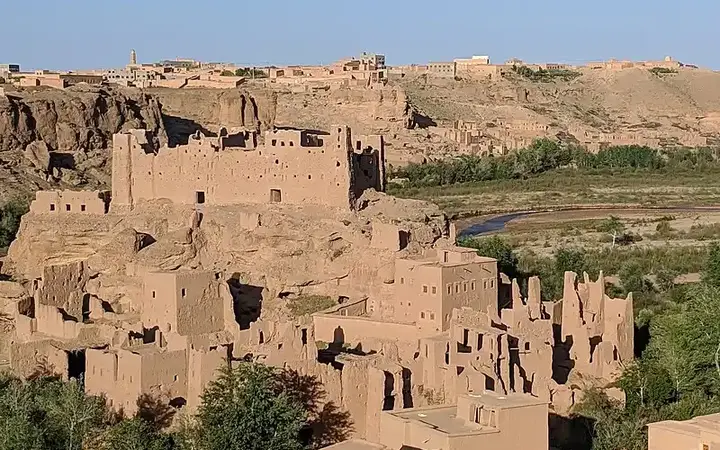Egypt's First Astronomical Observatory: Discovering a Window to the Universe

The sky has always amazed mankind, presenting a painting on which ancient civilizations painted myths, sciences and wonders. Ancient Egypt, known for its architectural wonders, deep spirituality and astronomical machinations, is no exception. Recently, archaeologists made a groundbreaking discovery - the first astronomical observatory from ancient Egypt. This discovery sheds new light on the evolving astronomical knowledge of Egyptians and their deep connection to the universe. This article delves into the rich history of astronomy, the role it played in ancient civilizations, especially in Egypt, and the significance of this latest discovery.
Show key points
- The recent discovery of an ancient Egyptian astronomical observatory highlights the civilization’s advanced and organized study of the cosmos.
- Ancient Egyptians integrated astronomy deeply into their religious beliefs, agriculture, and architecture, aligning temples and pyramids with celestial bodies.
- Tools such as the merkhet and palm branch were developed by Egyptians to observe and measure celestial phenomena with surprising accuracy.
- ADVERTISEMENT
- Astronomy played a crucial role across ancient civilizations globally, from the Mayans to the Babylonians, indicating a shared human fascination with the night sky.
- The observatory found in Nabta Playa, dating back to around 2500 BC, consists of stone arrangements aligned with solstices and equinoxes, similar to Stonehenge.
- This site not only validates the use of formal astronomical structures in Egypt but also suggests that such knowledge predated similar developments elsewhere.
- The discovery provides profound insight into how Egyptians viewed cosmic order as central to their worldview, influencing timekeeping, spirituality, and governance.
1. History of astronomy: universal magic.
Recommend
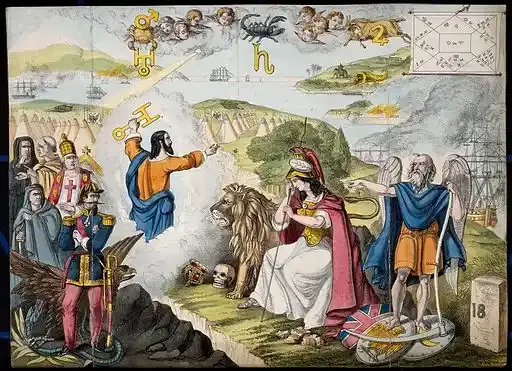
Astronomy is one of the earliest sciences, with its roots dating back to ancient civilizations around the world. From the Babylonians and Mayans to the Chinese and Greeks, early humans observed celestial bodies, tracking their movements to create calendars, guide agricultural practices, and predict cosmic events. Stars, planets, and constellations were often seen as divine or symbolic representations of gods and spirits. Over time, these observations laid the foundation for modern astronomy, enabling early scientists to develop theories about the universe and man's place in it.
2. Astronomy and Ancient Civilizations: A Global Perspective.
Ancient societies had a deep interest in the sky. The Mayans built observatories such as El Caracol to track the movement of Venus, while the Babylonians accurately mapped the positions of stars and planets. The Greeks formulated mathematical models to explain celestial phenomena, laying the foundation for modern astronomy. These civilizations viewed the universe as a scientific boundary and spiritual sphere, where astronomy influenced religious practices, calendars, and even governance. The Egyptians, as part of this global fascination, matched their monuments to celestial bodies, indicating their deep knowledge of the stars.
3. The ancient Egyptian civilization and its fascination with astronomy.
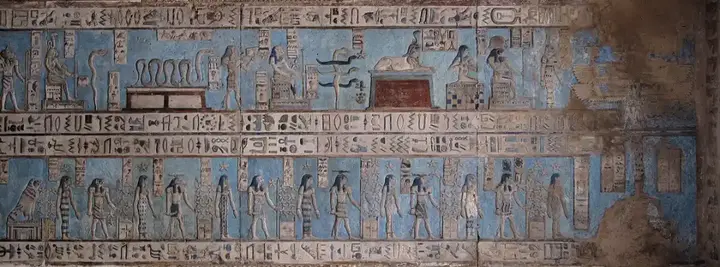
The civilization of ancient Egypt was closely related to the sky. The Egyptians believed that gods resided among the stars, and the sun god Ra was of central importance. They used astronomy not only for religious purposes but also for practical needs such as agriculture. The annual flooding of the Nile, which was crucial for agriculture, coincided with the rising of the Yemeni Sha'ari star. This event marked the beginning of the Egyptian New Year, confirming the Egyptians' reliance on astronomical observations to guide their lifestyle.
4. Astronomical instruments in ancient Egypt.

The ancient Egyptians developed many tools for observing stars and tracking time. The most famous of them are merkhet and palm branch tool. The Merkhet, a tool of vision, helped align structures such as temples and pyramids with specific stars or star clusters. The palm branch tool was also used along with merkhite to measure angles and track celestial bodies across the night sky. Egyptians also had rudimentary sundials and water clocks, which allowed them to measure time and divide the day into hours based on the movement of the sun.
5. Astronomical observatories in ancient Egypt.
While the Egyptians were known for their astronomical knowledge, there was little evidence of dedicated astronomical observatories – until now. Egyptian temples and pyramids often served two purposes, serving as spiritual sanctuaries and tools for astronomical observation. Many of these structures have been aligned with fundamental directions or celestial phenomena such as inversions. However, the recent discovery of an official astronomical observatory from ancient Egypt marks a turning point in understanding how Egyptians systematically observe the sky.
6. The discovery of the first astronomical observatory in Egypt.
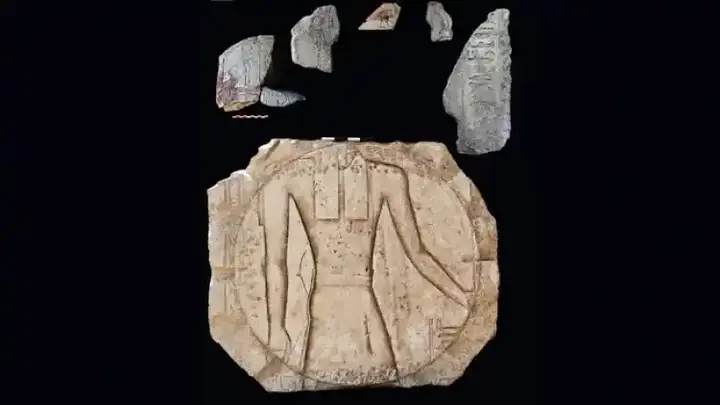
The discovery of Egypt's first known astronomical observatory is a huge event. Discovered in a remote area of the Egyptian desert, this observatory consists of a group of stones arranged according to key astronomical points, such as solstices and equinoxes. The observatory is believed to date back about 4,500 years, during the Old Kingdom period. This corresponds to the construction of the Great Pyramid at Giza, suggesting that the Egyptians may have used such observatories to enhance their architectural alignments and religious practices.
7. The period of construction of the observatory and its location.
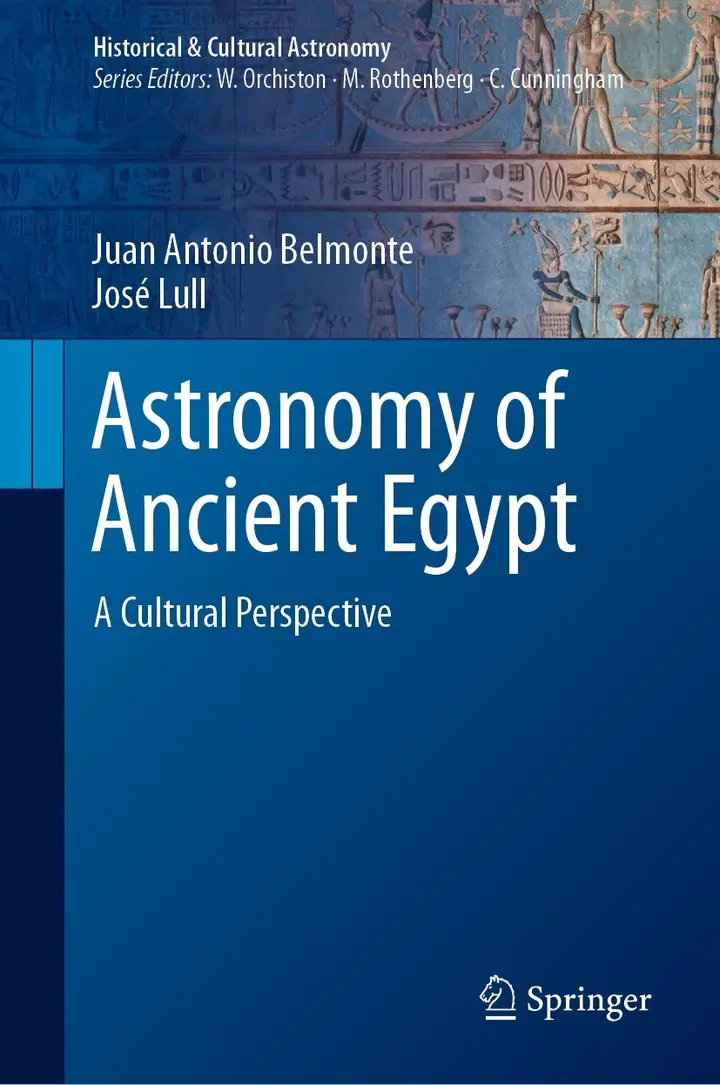
The observatory dates back to about 2500 BC, which coincides with the era of the construction of the pyramids. The site is located in Nabta Playa, in the southwestern Egyptian desert, about 800 kilometers south of Cairo. The Playa plant was an important prehistoric site long before the rise of the pharaohs. It was the center of activity of nomadic tribes, who may also have engaged in primitive astronomical practices. The structure of the observatory consists of standing stones and circles, similar to Stonehenge, and is in line with solar and stellar events.
The importance of this discovery cannot be overstated. It reveals that the Egyptians had official observatories where they systematically studied the sky, long before many other ancient civilizations developed similar structures. This website not only adds to the understanding of Egyptian knowledge, but also provides insight into how astronomy influences their culture, religion, and even architecture. Moreover, it highlights the desire of Egyptians to connect terrestrial life to the cosmic order, reinforcing their belief in the cyclical nature of time and existence.
The bottom line.
The discovery of the first astronomical observatory in ancient Egypt opens up new horizons for understanding the extent to which astronomy is entrenched in Egyptian society. This discovery reinforces the position of Egyptians among the early pioneers of astronomy, and confirms their pursuit of knowledge about the sky. Their study of the stars was not just a scientific effort, but deeply spiritual, serving as a guide to their religious practices, agriculture, and monumental architecture. As archaeologists continue to explore this fascinating site, we can't help but imagine what other discoveries await us about the cosmic knowledge that Egyptians possessed.
![]()
How Qatar successfully staged the 2022 FIFA World Cup
Qatar’s 2022 FIFA World Cup was more than a tournament—it showcased Qatar’s world-class stadiums, eco-friendly designs, and flawless planning. With thrilling matches, stars like Messi and Mbappé, and a legendary final, it left a powerful legacy of sports, innovation, and global unity. more- ADVERTISEMENT
![]()
Tafilalet Village: Exploring Morocco's Berber Life
Tafilalet, a hidden gem in Morocco, blends ancient Amazigh heritage with stunning desert landscapes. Visitors can explore traditional mud architecture, experience authentic Berber hospitality, and enjoy local cuisine like tagine and dates. It's a perfect escape for those seeking adventure, culture, and a taste of simple, traditional life. more- ADVERTISEMENT
![]()
Honoring Arab-American Heritage, Stories and Changemakers
Arab Americans have shaped U.S. culture for centuries, with waves of immigration starting in the 19th century. Today, they lead in law, literature, comedy, and medicine—like poet Khalil Gibran and comedian Maysoon Zayed. In 2022, April was officially designated as Arab-American Heritage Month to celebrate their contributions. more- ADVERTISEMENT
![]()
Bermuda Triangle Puzzle
The Bermuda Triangle remains a thrilling mystery filled with tales of vanishing ships, eerie time loss, and ghostly weather. Despite scientific theories and advanced research, the true cause of these disappearances continues to puzzle and intrigue the world. more- ADVERTISEMENT
![]()
Can you get into Svalbard's seed vault?
Tucked inside a remote Arctic mountain, the Svalbard Global Seed Vault stores over 930,000 crop varieties as a backup for global food security. It's a quiet champion, preserving biodiversity and standing ready when disaster or conflict strikes, like it did for Syria’s lost gene bank. more- ADVERTISEMENT
![]()
Creativity without borders: practical ideas to develop your creative skills
Creativity lives in all of us—it's not a gift for the few, but a skill we can all grow. With the right habits, fresh experiences, and a supportive environment, we can overcome fear and routine to unlock ideas that spark innovation and make life more exciting and meaningful. more- ADVERTISEMENT
![]()
Explore the magic of Belfast: from ship history to contemporary art culture
Belfast blends rich shipbuilding history with vibrant culture, stunning modern architecture, and lively arts. From Titanic’s legacy to music festivals and scenic parks, the city offers unforgettable experiences. Stroll markets, enjoy local dishes, and soak in the warmth of a place where tradition meets creativity. more- ADVERTISEMENT
![]()
Sama Beirut... Unique skyscraper
Sama Beirut, Lebanon’s tallest tower, rises with elegance in Achrafieh, offering stunning sea and mountain views. Built by Fadi Antonios out of love for his homeland, it blends green space, luxury living, and modern safety features—all in one iconic landmark symbolizing hope and resilience. more- ADVERTISEMENT
![]()
Unexpected reading and writing skills in people with autism
Many non-speaking autistic individuals show surprising reading and writing abilities, revealing untapped literacy potential. Through innovative tests, researchers found that over half could understand written language patterns, challenging long-standing assumptions and opening new paths for communication, education, and inclusion. more- ADVERTISEMENT
![]()
How to deal with difficult people and people with a capricious mood?
How to deal with difficult people and people with a capricious mood? more- ADVERTISEMENT













